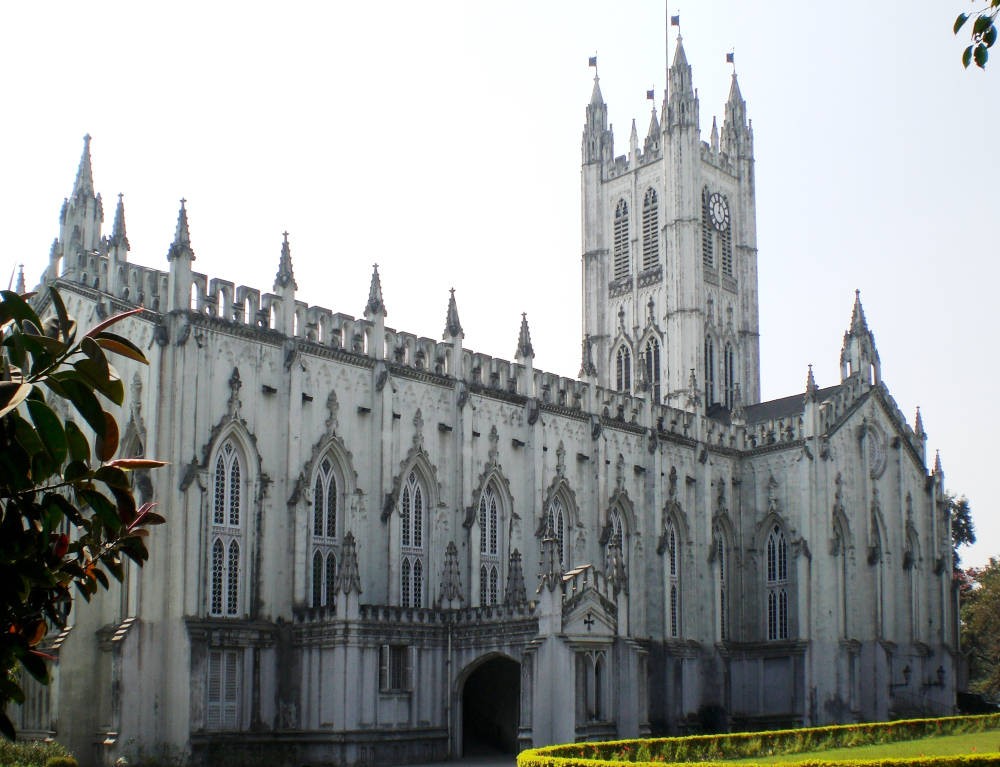One of the most beautiful churches in India, St. Paul Cathedral in Kolkata, is a breathtaking sight. Renowned for the Gothic architecture, it was constructed in 1847 and is the first Episcopal Church in Asia.

Situated on the Cathedral Road or the “island of attractions”, the cathedral is a marvelous sight when the sun lights up the high rising arched glass windows. The frescoes and paintings within add to the wondrousness of the cathedral.

History
The construction of St. Paul Cathedral of Kolkata began in 1839 and was completed in 1847 at the southern end of the Maidan. The construction was patronized by Bishop Wilson who is believed to have been buried in a vault under the cathedral’s altar, though no sign of this vault exists today.

St. Paul’s Cathedral is said to be the first Episcopal Church of the Orient. Thousands of tourists visit the church every month.

St. Paul’s Cathedral is an Anglican cathedral of the Church of North India. It is not only a religious site but also an architectural wonder. The flagstaff rises to a height of 175 feet above ground level. It took eight years to build the Cathedral and cost almost five lakhs to build.

The cathedral overall resembles England’s Norwich Cathedral. It has three stain glassed windows and two frescoes in Florentine Renaissance style. A beautiful example of Gothic Revival style, St.Paul’s Cathedral has vertical piers and pointed arches. The cathedral was rebuilt three times to stand as it does today.

Architecture
This Indo-Gothic architecture was designed by Major W.N. Forbes. The design was made by a military engineer Major William Nairn Forbes, who was assisted by C.K. Robinson. An earthquake in 1897 destroyed the church and it was renovated but when the tower collapsed in the earthquake of 1934, the cathedral was rebuilt on the lines of the Bell Harry Tower of Canterbury Cathedral. It is 247 feet in length and 81 feet in width. The flagstaff rises to a height of 175 feet above ground level.

The huge main hall of the cathedral contains beautifully carved wooden pews and chairs and the walls are covered with colorful artwork describing the life and works of Saint Paul. There is also a library at the St.Paul’s Cathedral which hosts the collection of Bishop Wilson and also a marble bust of the Bishop can be found here. The main hall of the cathedral has delicately carved wooden church chairs and benches. The Cathedral is surrounded by huge grounds which are adorned with several ancient trees.

Burials
The tomb of Bishop Wilson is said to be buried here but no sign of this vault exists today. Bishop Daniel Wilson, who had requested burial in the cathedral and also that memorial tablets be placed at St. Pauls’ Cathedral, in Bishop’s College Chapel at Calcutta, and in the St Mary’s Church, Islington. lies in an underground chamber of the cathedral, where a plaque conferred on him by Queen Victoria is also on display.

John Paxton Norman, an acting Chief Justice who was assassinated, is memorialized by a large, decorated plaque, surmounted by a cross, with an engraving depicting Justice with her scales against a background of tilework flowere evoking Judge Norman’s interest in botany. Arthur William Garnett, an English engineer who died in India in 1861, was buried here.
Must read Immaculate Conception Cathedral, Puducherry – Reminiscent of FRench Hstory in India
Must REad 50 Stars of Christmas : Santhome Basillica, Chennai – Historically Significant Church by the Shore









